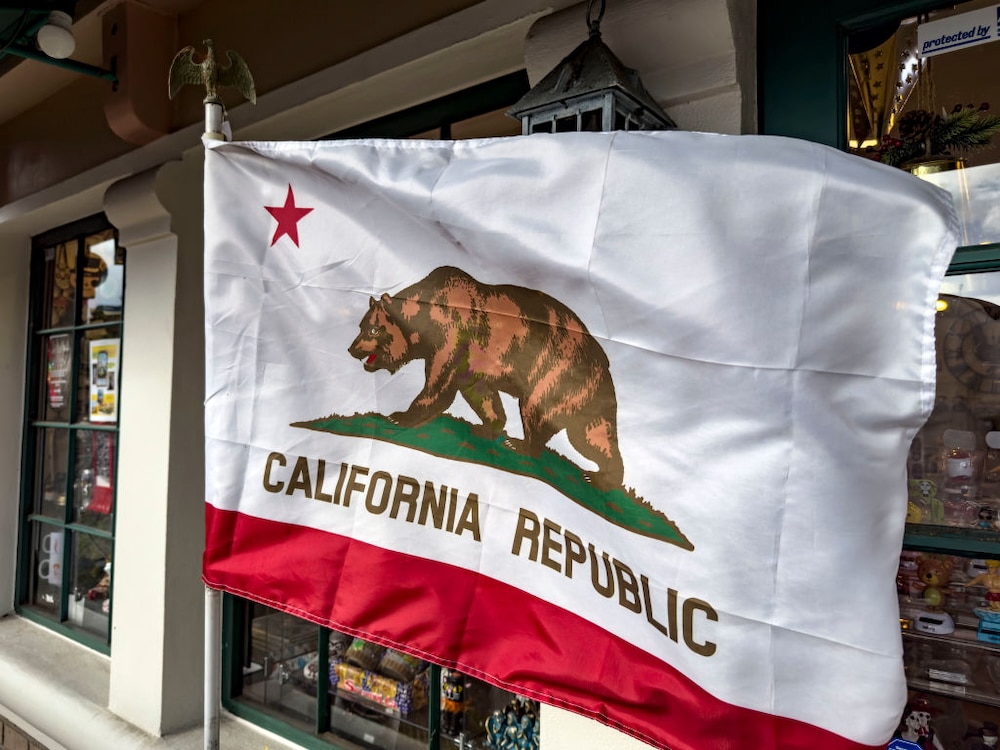This post was originally published on Eco Watch
At the time of the California Gold Rush in the mid-1800s, grizzly bears numbered as many as 10,000. In the following years, the iconic carnivores were entirely eradicated, with the last one seen wandering alone in Sequoia National Park in 1924.
Now, a new feasibility study by the California Grizzly Alliance has said grizzlies could be reintroduced to the Golden State, particularly in three regions: in the northwest forest close to the Oregon border, in the southwestern region and in the southern Sierra Nevada mountains, reported The Guardian.
Grizzlies provide a host of ecosystem benefits, including seed dispersal, nutrient cycling and aerating soil through digging.
“My first grizzly sighting came on a long summer’s day in Alaska’s Denali National Park. While making my way through great meadows, I glanced their hulking shapes on the horizon, the distance shrinking these tawny giants to mere caterpillars. And yet, there they were, magnificent and untamed, nature raw and powerful,” wrote conservationist Kris Tompkins in a foreword to the study. “Coming into the presence of an iconic species like a grizzly is an electric bolt to the senses. With one look, the meek dimensions of human existence are laid bare. We are humbled, which is a very good thing… It’s time to think of the other creatures with which we share the Earth, those that have no say in the future but are fundamental to an intact and thriving planet.”
The study, Recovering Grizzly Bears in California, comes to the conclusion that there are no ecological, biological, economic, policy or legal obstacles standing in the way of returning the official animal of California to the state that could not be overcome, a press release from the Center for Biological Diversity said.
“Whether or not we bring grizzly bears back to California is a choice, as there is no biological reason we couldn’t do it,” said environmental historian Peter Alagona, the study’s lead author and a conservation scientist and professor at University of California, Santa Barbara, in the press release. “A decade of research informing this study demonstrates that grizzlies likely can thrive in California if we make the affirmative decision to bring them back.”
Grizzly bears are prominently featured on the flag and seal of California, though none currently inhabit its forests.
“It’s important for people to realize that the grizzly bear isn’t just a symbol on a flag — it was a real animal that shaped California’s ecosystems and holds deep meaning for Tribal Nations across the state,” said Tejon Tribe Chairman Octavio Escobedo III, who wrote one of the forewords to the study, in the press release. “The grizzly was honored and respected not only for its power, but for the balance it helped maintain in the natural world. This study shows that with the right approach, it’s actually possible for the bear to fulfill that role once again.”
In the study, scientists and policy experts explore the history, biology and ecology of Calfironia’s grizzlies, as well as their relationship with humans. They also look at existing habitats that could be suitable for the species, along with the likely ecological, social and economic impacts of their potential reintroduction.
The research drew upon new analysis and previous studies by scientists who are a part of the California Grizzly Research Network.
Recognized as a “cultural keystone species” in the study, many California Tribes still respect grizzlies as an honored relative, even though they have been absent from the state for over a century.
“Grizzlies coexisted with the ancestors of California Tribes for thousands of years and still hold deep cultural, spiritual, religious and social significance. This long relationship gives Tribes unique insight into the grizzly’s ecological role and what future coexistence could look like,” the press release said.
The authors of the study included recommendations for community and Tribal engagement, educational outreach and future research.
“To our ancestors, the grizzly bear was a revered relative, who kept the natural world in balance,” said Yurok Tribe Chairman Joseph L. James in the press release. “Our people feel the same way today. In the Yurok worldview, all native wildlife species play important roles in healthy ecosystems, which is why we reintroduced the California condor in 2022. Based on this experience, we know that a potential return of the grizzly will require additional scientific research, widespread community buy-in, and collaboration.”
Last year, the centennial of the elimination of grizzly bears from the State of California was officially recognized. The state senate passed a resolution in April of 2024 declaring it the “Year of the California Grizzly Bear,” marking the 100th year since the last grizzly was seen in the state.
The California Fish and Game Commission passed a similar resolution marking the centennial and called for studies that could inform “any consideration of the future of the grizzly bear in California.”
The results of a 2019 poll by California Grizzly Research Network showed that roughly two-thirds of California residents support the restoration of grizzlies to the state, with only approximately 14 percent opposing.
“The grizzly bear is far and away the most ecologically and culturally significant species that we have lost from California,” said Brendan Cummings, the Center for Biological Diversity’s conservation director, who contributed a chapter to the feasibility study. “Fortunately, this study clearly shows that the loss is not irreversible. Going forward, whether or not grizzlies return to the state comes down to our political leaders and wildlife managers having the boldness of vision to make it happen. I believe they do.”
The post Grizzlies Could Make a Comeback in California, New Study Suggests appeared first on EcoWatch.





0 Comments